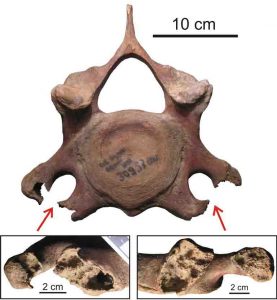
Sergey Leshchinskiy, paleontologist, head of TSU’s Laboratory of Mesozoic and Cenozoic Continental Ecosystems, has studied the remains of Yakut mammoths collected on one of the world’s largest paleontological sites of mammoth fauna, Berelyokh. His study showed that almost half of the bones of these ancient mammals have signs of serious pathologies typical for the human skeletal system.
According to the scientist, the remains of mammoths that lived about 12,000 to 13,000 years ago (ca BP) in the area of modern Yakutia are perfectly preserved. Bones carried to the Berelyokh site were covered by sediments, and this saved them from weathering and damage by predators. In permafrost conditions, the decomposition of tissues is slow, so even after millennia, the cartilage on some bones survived.
During work with the collection, the research team found that 42 percent of the samples showed signs of diseases of the skeletal system. Among them there were two pathologies that no one in the world had ever detected on the remains of this species.
One of these conditions is known in medicine as “articular mouse,” or “rice grain.” It occurs when a fragment of bone or cartilaginous tissue is located freely in the joint cavity, explains Sergei Leschinskiy. Quite often, this pathology is observed in humans. When such a fragment enters the articular cavity, severe joint pain occurs. This indicates a serious disease such as subchondral bone necrosis. An animal with this ailment is restricted in movement and often became an easy target for predators.
Another anomaly, described for the first time in mammoths, is the openness of the transverse apertures of the cervical vertebrae, where blood vessels and nerve plexuses are normally located. The researchers uncovered several vertebrae with such a deviation, and it is obvious that they are the bones of different individuals. However, in most cases, the mammoths have signs of destructive changes, osteoporosis, osteolysis, osteofibrosis, osteomalacia, articular diseases, and other diseases caused by metabolic disorders by a lack or excess of vital macro and micro elements.
These results confirm the hypothesis of TSU paleontologists that the cause of mass extinction of mammoths was the geochemical stress that arose due to mineral starvation or major ecological changes on the planet.
The results of the research are available in one of the prestigious journals in quaternary sciences, from the Elsevier publishing house—Quaternary International.
Reference:
Sergey V. Leshchinskiy, Strong evidence for dietary mineral imbalance as the cause of osteodystrophy in Late Glacial woolly mammoths at the Berelyokh site (Northern Yakutia, Russia), Quaternary International (2017). DOI: 10.1016/j.quaint.2017.02.036
Note: The above post is reprinted from materials provided by National Research Tomsk State University.










